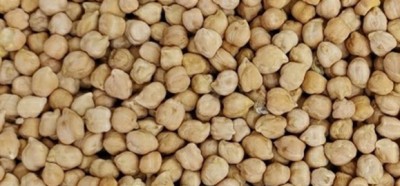Chick Pea
The chickpea (Binomial name is Cicer arietinum) (also garbanzo bean, Indian pea, ceci bean, Bengal gram) is an edible legume of the family Fabaceae, subfamily Faboideae. Chickpeas are high in protein
The chickpea (Binomial name is Cicer arietinum) (also garbanzo bean, Indian pea, ceci bean, Bengal gram) is an edible legume of the family Fabaceae, subfamily Faboideae. Chickpeas are high in protein and one of the earliest cultivated vegetables; 7,500-year-old remains have been found in the Middle East.[1] Chickpea , the third most important food legume of the world is commonly known as chana and Garbanzo beans. It contains 25 per cent proteins, which is the maximum among pulses and 60 per cent carbohydrates along with significant amounts of molybdenum, zinc, folate, manganese and dietary fibre. This crop, mainly cultivated in rabi season, has the capacity to withstand drought conditions. Two types of chickpea are produced namely Desi and Kabuli, which are classified on the basis the seed size, colour and taste. About 20-25 per cent of the chickpea production in the world is Kabuli and the remainder is Desi. The large Kabuli type is used mainly in salad bars and vegetable mixes. Chickpeas are also used as a vegetable and in preparing a wide variety of snack foods, soups, sweets, and condiments. Smaller size Kabuli chickpeas are used whole, de-hulled and split to produce dal, or ground into fine flour called besan. In West Asia, consumption is based on a popular dish known as “hummus” which is produced from mashed chickpeas. In many regions, young plants and green pods are eaten like spinach.


